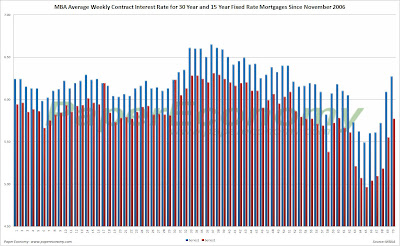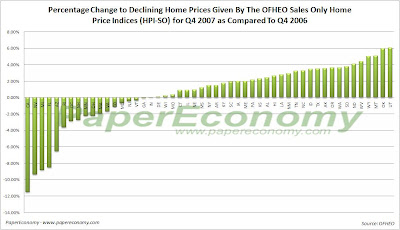 This post combines the results of the Rueters/University of Michigan Survey of Consumers, The Conference Board’s Index of CEO Confidence and The Conference Board’s Index of Leading Economic indicators into a post that will run twice monthly as preliminary data is firmed.
This post combines the results of the Rueters/University of Michigan Survey of Consumers, The Conference Board’s Index of CEO Confidence and The Conference Board’s Index of Leading Economic indicators into a post that will run twice monthly as preliminary data is firmed.These three indicators should disclose a clear picture of both the overall sense of confidence (or lack thereof) on the part of consumers and businesses as well the overall trend of economic circumstances.
Today’s final release of the Reuters/University of Michigan Survey of Consumers for February confirmed a shocking plunge in consumer sentiment to a final reading of 70.8, a decline of 22.45% compared to February 2007.
It’s important to note that this is the lowest consumer sentiment reading seen since the recessionary period of February 1992 which, according to Richard Curtin, the Director of the Reuters/University, indicates that recessionary environment is upon us.
“The Sentiment Index has only been this low during the recessions of the mid 1970's, the early 1980's and the early 1990's … Past declines of this magnitude have always been associated with a subsequent recession”
The Index of Consumer Expectations (a component of the Index of Leading Economic Indicators) fell to 62.4, a whopping 23.44% below the result seen in February 2007.
As for the current circumstances, the Current Economic Conditions Index fell to 83.8, 21.46% below the result seen in February 2007.
As you can see from the chart below (click for larger), the consumer sentiment data is a pretty good indicator of recessions leaving the recent declines possibly foretelling rough times ahead.
 The latest quarterly results (Q4 2007) of The Conference Board’s CEO Confidence Index fell to a value of 39 with the “current economic conditions” component registering 33.54, the lowest readings since the recessionary period following the dot-com bust.
The latest quarterly results (Q4 2007) of The Conference Board’s CEO Confidence Index fell to a value of 39 with the “current economic conditions” component registering 33.54, the lowest readings since the recessionary period following the dot-com bust.It’s important to note that on every instance that the CEO “current economic conditions” index dropped below a level of 40, the economy was either in recession or very near.
 Finally, the latest results of the Conference Board’s Index of Leading Economic Indicators continues to predict troubled times ahead declining 0.1% from December’s level and 1.52% on a year-over-year basis compared to January 2007, a fourth straight monthly decline leaving the index at 135.8.
Finally, the latest results of the Conference Board’s Index of Leading Economic Indicators continues to predict troubled times ahead declining 0.1% from December’s level and 1.52% on a year-over-year basis compared to January 2007, a fourth straight monthly decline leaving the index at 135.8.It’s important to note that a year-over-year decline greater than 1.5% has ONLY preceded EVERY recession that has occurred in the last 59 years so the back to back declines of 1.81% and 1.52% seem to suggest that overall the components of the index are indicating that recession is either here or very near.
Note that at the end of March, The Conference Board will release its annual benchmark revision to the index as some of the source data is updated.
















































